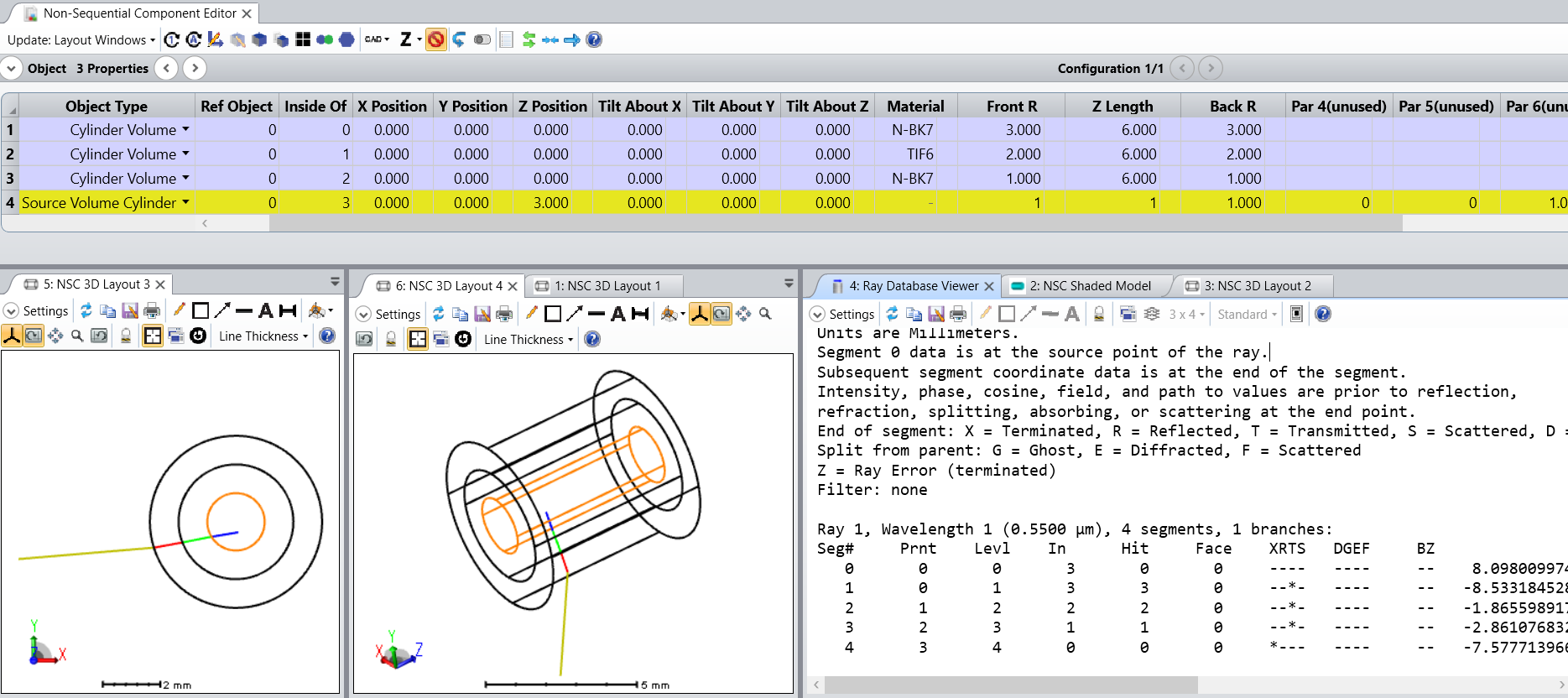Hi, i’m a physics student and i’m new to Zemax and i’m trying to understand if Zemax allows to do what i need and how to implement it.
I try to summarize the problem:
I would like to implement a cylindrical geometry with coaxial cylindrical volumes. The full length in z is 5.6 m, i.e. z is in [-2.8 m , 2.8 m]
In particular i have a cylindrical layer made of aerogel (refractive index 1.03) with inner radius 90 cm and outer radius 92 cm. Then there is a region filled with argon (refractive index 1.0028) with inner radius 92 cm and outer radius 112 cm. Then there is a quarz layer with inner radius 112 cm and outer radius 112.5 cm. Finally there is a cylindrical surface made of silicon at 112,5 cm.
My goal is to consider a ultra-relativistic charged particle (like an electron or pion with momentum 5-6 GeV/c) coming from the center of the system (0 cm,0 cm ,0 cm) and to study the Cherenkov photons produced along the particle track in aerogel, argon and quartz.
The primary problem is to understand if itis possible to implement Cherenkov effect and make a particle to produce photons in the paterial. I heard that it is possible , bun i didn’t find anything of the user guide (where Cherenkov effect is not even mentioned). In addition (but this is a refinement), is it possible to also simulate Rayleigh scattering of photons in aerogel?
In addition, since i’m new and still have to learn more about how to build geometries, i’m also having troubles implementing this geometry, despite the fact that it’s very simple.
If it doesn’t take too much time, could you provide me with a script implementing this geometry, please?
One last thing. In the case the physical process can be correctly implemented, do you know if it is possible to save on a .txt file the photon production points (x,y,z) in the materials and the impact points on the last surface?
Sorry if my questions may seem stupid, but as i said i’m new and i’m having troubles following the user guide.
Thank you in advance.





